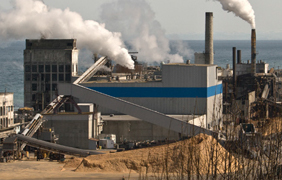The Clean Water Act (CWA), formally known as the Federal Water Pollution Control Act, establishes the process of regulating discharged pollutants into the water and also regulates the quality standard of water. Under the CWA, it is prohibited to discharge any pollutant from a point source into navigable waters without a permit. A point source can be defined as a discrete conveyance such as a pipe or man-made ditch.
Under this act, industrial and municipal facilities must have a permit from the National Pollutant Discharge Elimination System (NPDES). The objective of the permit is to address the most significant problems and to promote compliance among the regulated community. The compliance monitoring of the NPDES Program takes places at the state level and includes a range of techniques, including discharge monitoring report reviews and on-site compliance evaluations. The specifics of these inspections differ depending on the types of discharges that occur at an industrial or municipal facility. Typical types of discharge include municipal wastewater overflows, stormwater, pretreatment, biosolids, and discharges from concentrated animal feeding operations.


